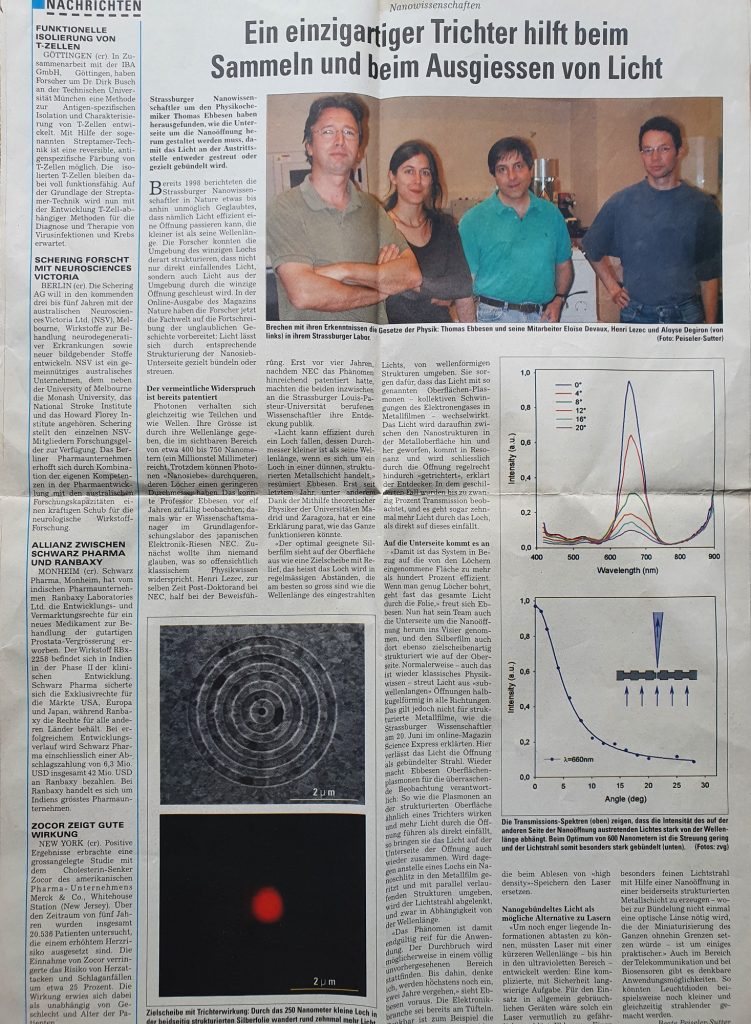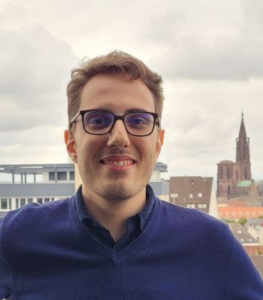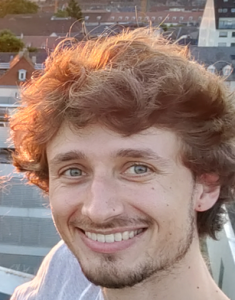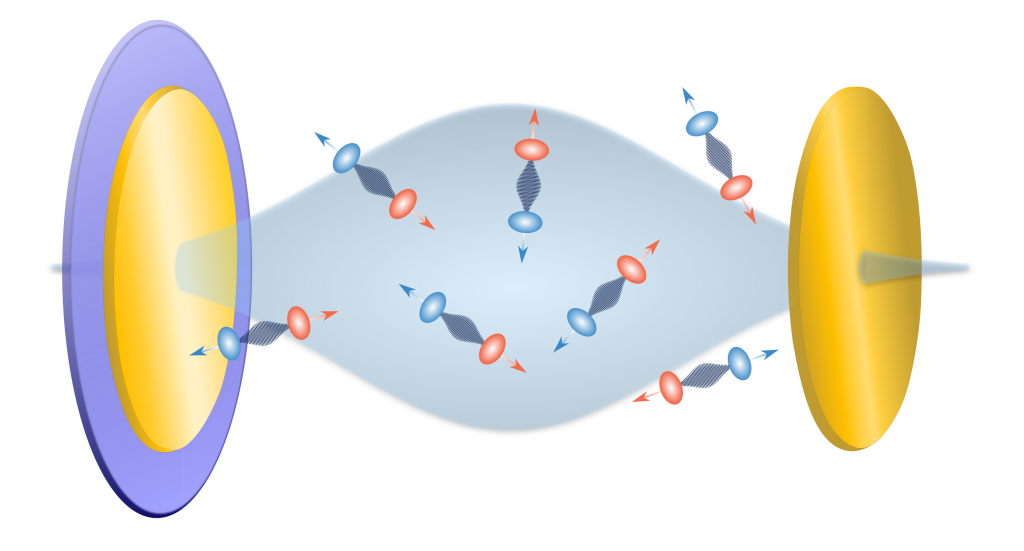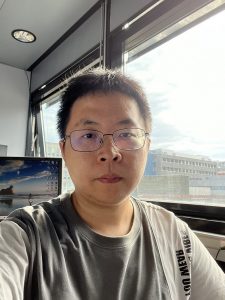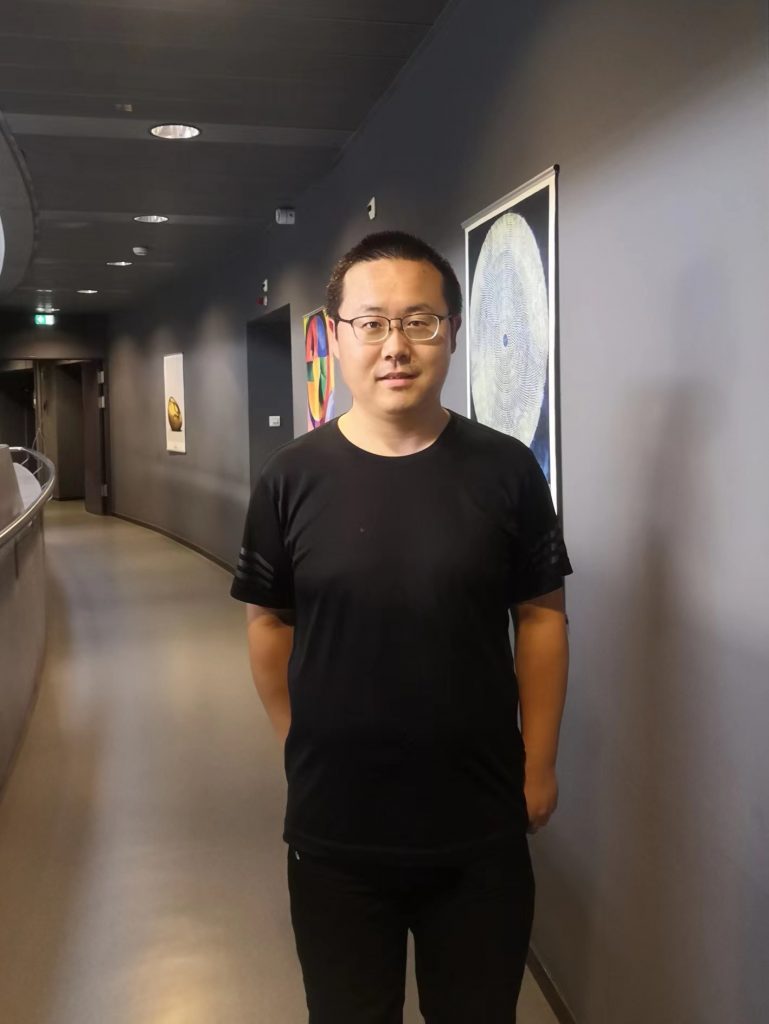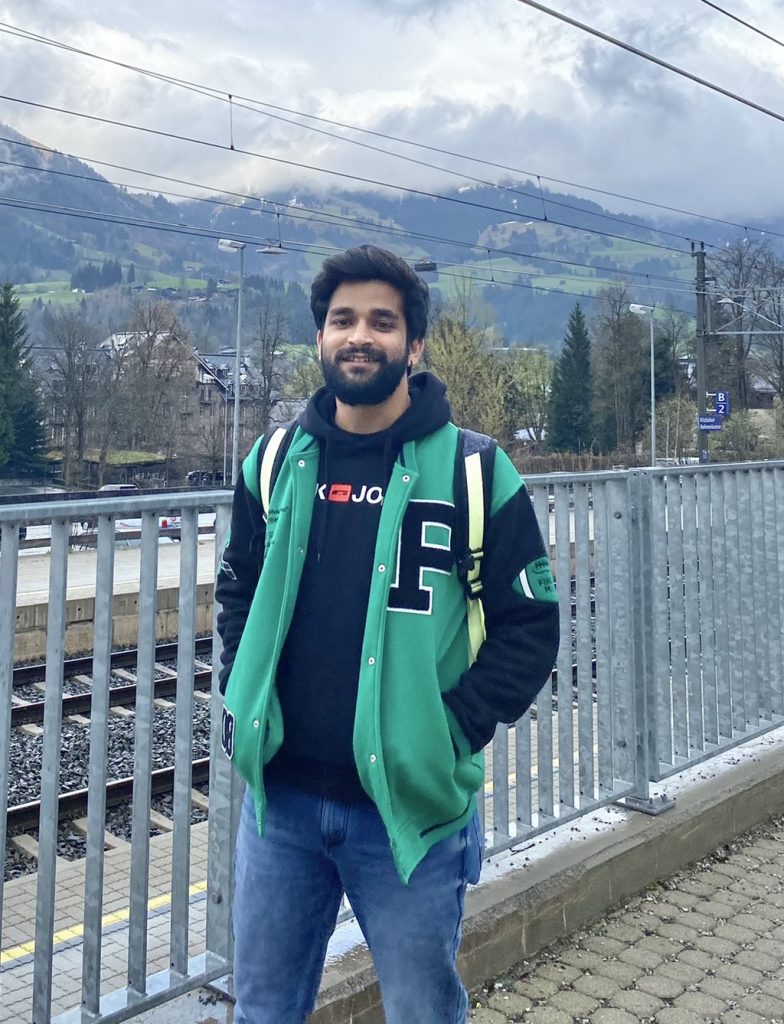… a swiss journal, Chemische Rundschau, interviewed Thomas Ebbesen after the publication of our paper in Science review. At that time, we were a very small team, located rue de l’Université in the old building of Physics Faculty, as ISIS building was under construction. This is probably our first group picture ever and founding it back on my shelves gave me the idea to create a page for our old group pictures. Have fun !
Bem-vindo Arthur !
It will soon be three weeks that we have the pleasure to welcome a new brasilian student in the lab, Arthur Fonseca. He is currently doing a phD at the Physics Institute of the Federal University of Rio de Janeiro, under the supervision of Pr. Paulo Maia Neto. He is doing experimental and theoretical studies on vortex beams and light-matter interaction in optical tweezers. Arthur will stay 6 months among us, welcome to him !
Jamais deux sans trois
Next Thursday, the 29th of September at 9am, it will be the turn of Rémi Goerlich to have his phD defense, that will again take place in the conference room of ISIS. His work, entitled
“Optical control of Brownian diffusion : from bath engineering to quantum analogues”
was supervised by Dr Giovanni Manfredi, IPCMS, and Dr Cyriaque Genet. The day before, Wednesday 28, at 2pm, there will be a minisymposium on brownian motion at IPCMS, please see the flyer for more information.
Double defense
This week, two phD students of the group will be defending :
- On September 22, 9am, Kripa Joseph, who worked under the supervision of Pr Thomas Ebbesen, will start with her defense entitled
“Conductivity and supramolecular assembly under light-matter strong coupling”
- On September 23, 9am, Jérôme Gautier, who has been supervised by Dr Cyriaque Genet and Pr Thomas Ebbesen, will follow with his own defense entitled
“Effect of chirality in strong light-matter coupling ”
Both defenses will take place in the conference room of ISIS and will be followed by a small reception in the salle Vasconi, 6th floor of ISIS, at lunch time. Don’t forget the mini symposium inbetween, on September 22 afternoon.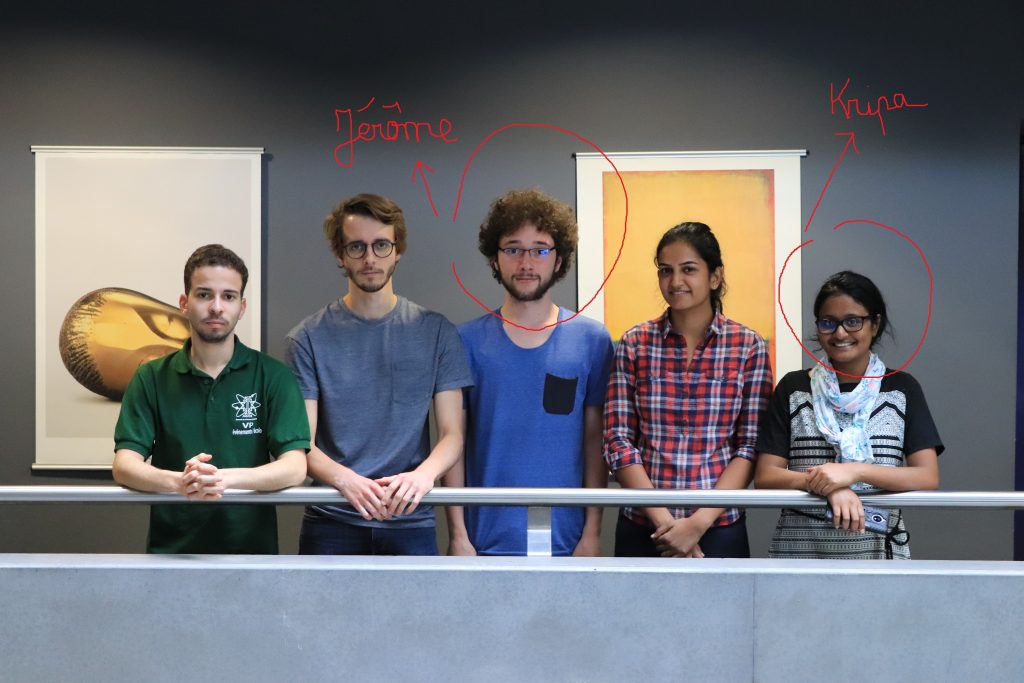 Kripa and Jérôme when they were newbies first arrived in the group, 4 years ago…
Kripa and Jérôme when they were newbies first arrived in the group, 4 years ago…
Mini symposium on light-matter coupled materials
Next Thursday, September 22, we organize a (mini) symposium on light-matter coupled materials that will take place at 2pm in the salle de Conférences of ISIS, with the following speakers :
- 2pm, Prof. Joël Bellessa (University of Lyon, France) : “Extended hybridization and energy transfer in multimaterial polaritonic metasurfaces”
- 2.45pm, Prof. Tal Schwartz (University of Tel Aviv, Israel) : “Entangling Electromagnetic Modes by Mutual Coupling with Molecules“
(3.30pm Coffee break)
- 3.45pm, Prof. Abraham Nitzan (University of Pennsylvania, USA): “Molecules in optical cavities: Electron transfer and transmission, Polaritons, vibrational strong coupling and collective response“
- 4.30pm, Dr. Aloyse Degiron (University of Paris Cité, France): “Opportunities for optoelectronics with colloidal nanocrystal assemblies weakly coupled to their environment”
For more details about the talks, you can download the program here.
Welcome to Weijian !
Since the first of september, we have the pleasure to welcome a new postdoctoral researcher in the team, Dr Weijian Tao. Weijian is originated from Zheijiang Province in China, and spent all his life there till now. He got his phD degree from Zheijiang University in 2022. His research subject was focused on the excited state dynamics of emerging inorganic semiconductor materials with strong electron-phonon interactions, for example 2D lead halide perovskites and antimony selenides, to understand how electron-phonon interaction defines fundamental advantages or limitations in these kinds of materials. Welcome to him !
再见 Kuidong !
One week ago, Kuidong Wang went back to China after 4 years spent in the lab, as a postdoctoral researcher. He now got an associate professor position in Xi’an. We really appreciated his presence among us and his investment in the research project he took part to.
We wish him all the best for the future !
Welcome to Rahul !
We welcome since the 1st of July Rahul Meena, phD in Université Libre de Bruxelles under the supervision of Pr. Yves Geerts, in the context of the UHMob program. Rahul comes from Rajasthan in India and received his master degree from IISER Bhopal. He is currently working on synthesizing new organic semiconductors having high carrier mobility, that will be tested under strong coupling with conductivity measurements. He will stay 2 months in the lab, in office n°106.
மீண்டும் சந்திப்போம் Kalaivanan !
Kalaivanan Nagarajan left our lab one week ago to go back in India where he will take a position of reader at the Department of Chemical Sciences of TIFR, Mumbai. He spent 5 years in the lab, during which he had time to build strong relationships with people here, to evolve as a scientist with a pure chemistry education to a much more physics one and to forge a family. His presence in the team was precious thanks to his energy and enthusiasm. No doubt that his new colleagues will benefit from this and we wish him all the best for the future !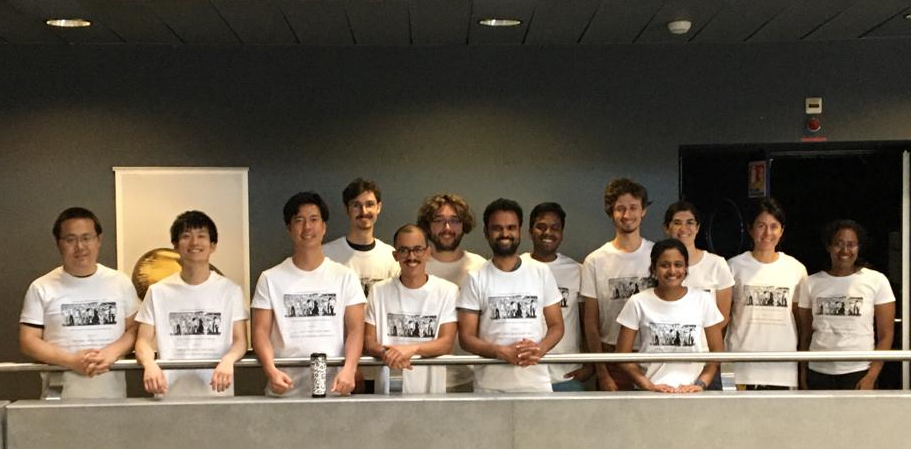
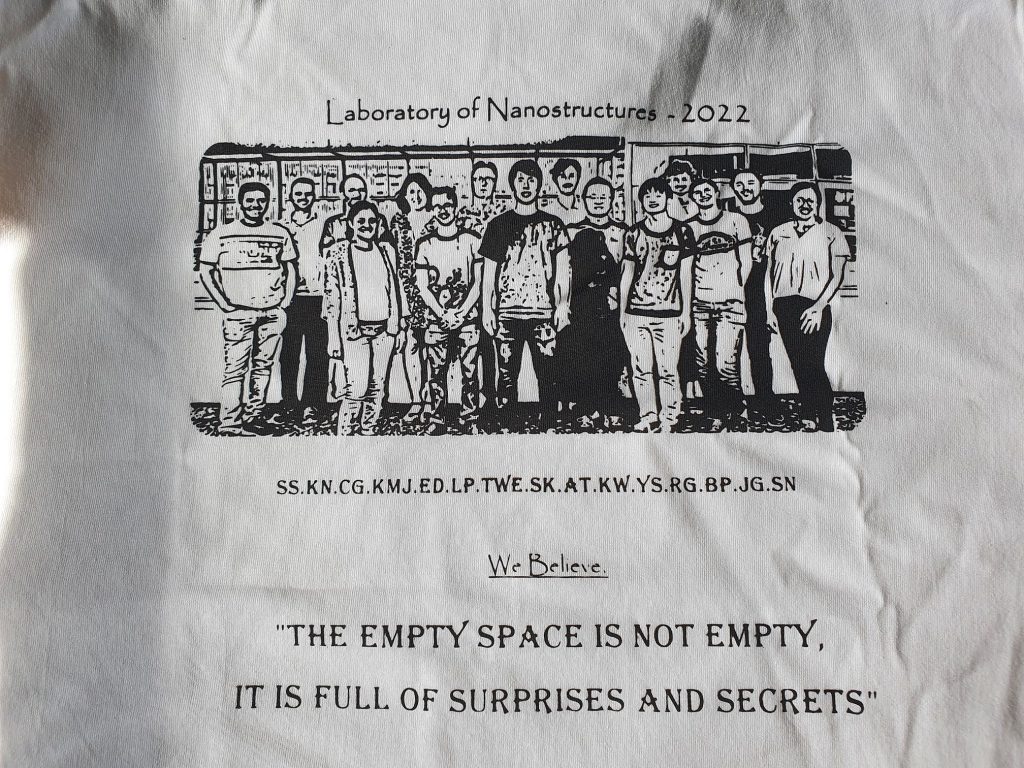
Seminar by Pr. Hiroshi Fukumura
Today, we have the pleasure to welcome Pr Hiroshi Fukumura (KU Leuven, Belgium, & Tohoku University, Japan) who will give a talk at 11am in the Salle de Conférence of ISIS, entitled
“Liquid-liquid phase separation dynamics: hierarchy from molecular level to continuous bulk”
Here below you can find the abstract of his talk :
Pulsed laser induced liquid-liquid phase separation has been studied with various time-resolved techniques. Time-resolved Raman spectroscopy and fluorescence spectroscopy revealed molecular level changes immediately after the laser pulses up to 1 . Ultrafast imaging under conventional microscopes showed macroscopic changes started 10 after the laser pulse. The macroscopic phase separation seemed to follow spinodal decomposition described by Kahn-Hilliard theory. It is, however, yet unclear what occurs in the time range between 1 and 10 . Recently we have succeeded in observing this time range with time-resolved structured illumination as well as optical diffraction techniques. Possible explanation of our results would be that mesoscopic entities like micelle-like structures mediate between molecular level changes and macroscopic spinodal decomposition. Related topics like liquid-liquid phase separation in living cells, critical Casimir force in binary liquids, laser ablation and implantation of polymer surfaces may be introduced.

